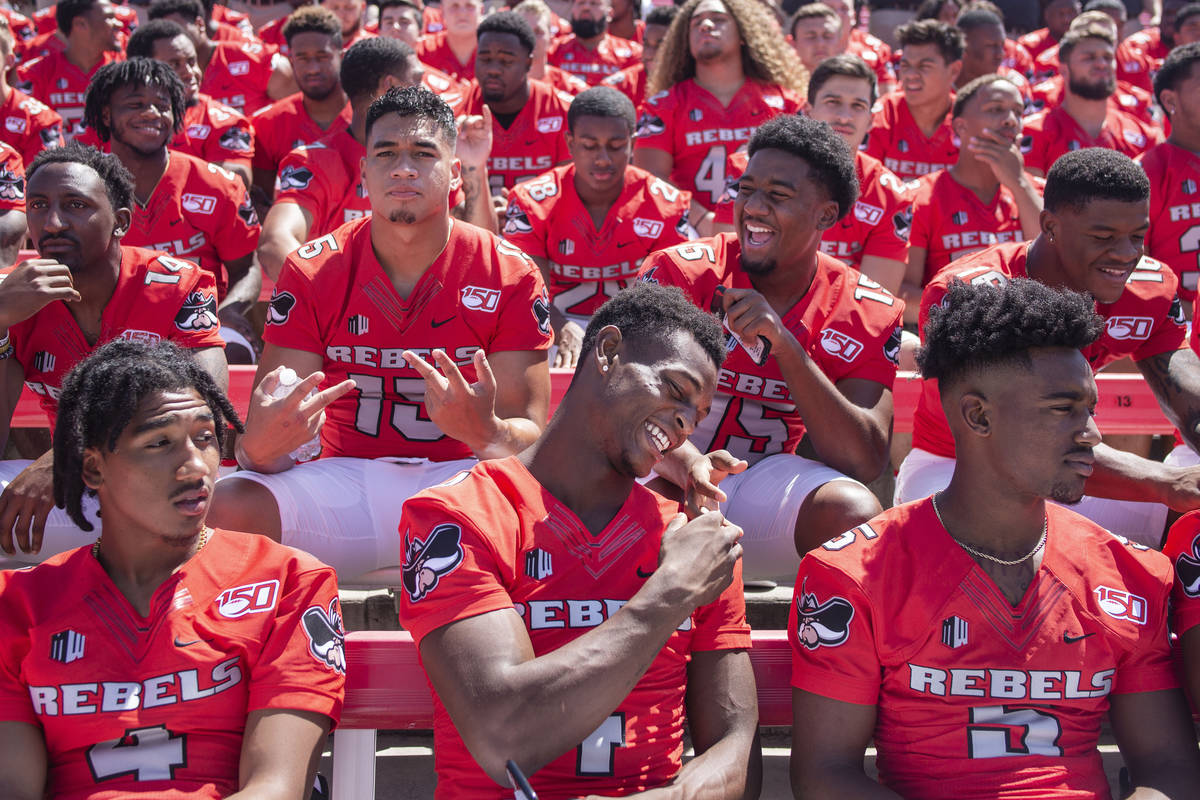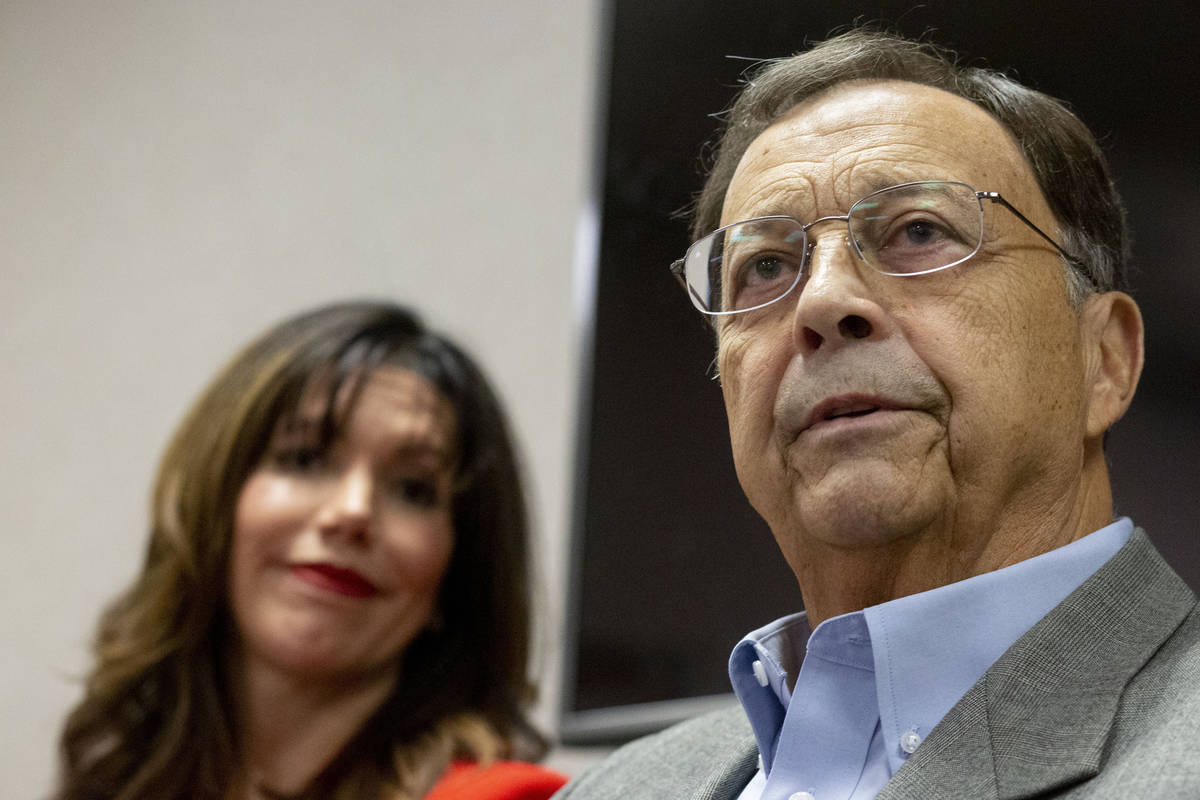UNLV, college athletics could experience restructuring
Having already taken an enormous financial toll on college athletic budgets across the country, the coronavirus pandemic has administrators concerned like never before about what’s to come.
Jim Livengood, the former UNLV athletic director who retired seven years ago and became a national consultant, hears those nervous voices every day.
They don’t know if a complete football season will be played and what the financial fallout would be if forced to schedule games in empty stadiums. They don’t know how the pandemic will affect other sports or what a return to normal would look like.
“What does the future hold?” Livengood asked rhetorically. “Nobody has a crystal ball on that. Even people that think they do don’t.”
That future could include a radical realignment that becomes a survival of the fittest even within the five most influential conferences.
“You’ve begun to see, from a college football perspective, a gradual morphing into a super conference,” said David Carter, a sports business expert at the University of Southern California. “You’ve always had haves and have-nots in college sports, and now I think that divide is going to become even greater … as schools decide what kind of sports business do they really want to be in.”
UNLV’s place?
So what does all this mean for UNLV?
Compared with other Mountain West and Group of Five schools, the tier just below the Power Five conferences, sports business experts say the Rebels have the potential to emerge from this crisis better than most, but even UNLV’s future is not clear.
In the Rebels’ favor is a men’s basketball history of four Final Fours, including the 1990 national championship, and facilities in that sport and now in football that rival the nation’s best programs.
Mark Rosentraub, sport management chairman at Michigan who also consulted with UNLV in its football stadium deliberations, said if the Rebels re-establish a successful basketball program, they are “well-positioned and will make it through. … I wouldn’t use the word prosper, but UNLV can get back to stability.”
Working against UNLV has been its failure to put a consistent winner on the basketball court and any kind of winner on the football field. The Rebels’ last trip to the Final Four was in 1991, and the football team has appeared in four bowls in its history.
Athletic director Desiree Reed-Francois has made changes in both programs in the past 15 months, hiring T.J. Otzelberger in basketball and Marcus Arroyo in football, that already have borne fruit. The Rebels ended the basketball regular season with a five-game winning streak to tie for second in the Mountain West, and Arroyo put together the conference’s second-best recruiting class, according to 247Sports’ composite rankings.
“I think the true power brokers of college athletics will be those that are not just in the big conferences but that boast consistently strong football and basketball programs or are so strong in one that they could allow the other one to maybe not be quite as strong,” Carter said. “They need to be in either these big media markets, big corporate markets, or they have to be these big brands.
“So you can survive in Tuscaloosa (Alabama) and do well, and you can do well in Norman (Oklahoma), and you can do well in Los Angeles, and to a certain extent shouldn’t you be able to do well in Las Vegas?”
The push to play football
The early consensus during the pandemic from athletic departments and conferences was football wouldn’t be played without fans because it wouldn’t make financial sense, the money gained from TV contracts would not offset the loss of gate receipts. Plus, they couldn’t justify playing if students weren’t allowed on campus.
But as a limited number of spectators being allowed in stadiums has become more of a possibility, athletic directors and conference commissioners have become more open to the idea. That evolving stance underscores the importance that football revenue has on athletic budgets, which would suffer a combined $4 billion loss just for the Power Five schools if the season were canceled, according to ESPN.
“Sometimes I think we need to step back and take a whole new fresh look and say, ‘If we could start over, how would we design intercollegiate athletics within the institution of higher education?’ ” Livengood said. “I hate to say it like this, but there are probably people who wouldn’t be playing. There might be other people who will escalate what they’re doing and say, ‘We can play at a higher level.’
“One of the issues we have right now is we do have people playing at a level they’re not capable of playing at.”
That’s an argument that could apply to nearly every Group of Five football program, which heads into each season on a different financial playing field from the Power Fives and has no realistic shot at the national championship.
For example, last year, according to the UNLV athletic budget, the football program generated $7.2 million in revenue and $10.2 million in expenses.
Marcus Bowman, UNLV’s senior associate athletic director and chief financial officer, said those numbers don’t include money that football generates that is not sport specific. That includes the new Mountain West TV contract that will pay each school $3 million to $4 million annually and the Learfield multimedia rights deal that pays $4.8 million.
“Our whole governance model is based on football,” Reed-Francois said.
She said football is crucial not only to the athletic department’s present, but its future as well.
“We can change the trajectory of our program’s history with the opportunity Allegiant Stadium presents,” Reed-Francois said. “Not only our student-athletes’ experience, not only the perception of what UNLV football can be for our community and for our university, but our athletic department’s future as well. We now have an opportunity to actualize revenue that we have never had before at UNLV.
“While this pandemic has been challenging for all of us, if we are able to capitalize on all that this stadium can do, football will be our pathway forward for the entire athletic department.”
More tough decisions to come
Because of the pandemic, UNLV already has cut 15 percent, or $1.7 million, of its operating budget for the 2020-21 fiscal year. Most reductions were in travel costs.
Other Mountain West athletic departments have announced cost-saving measures, and all — including UNLV — are expected to make further budget cuts.
No conference school has eliminated any sports, a worst-case scenario that administrators hope to avoid.
The virus and its financial ramifications will determine the course of action in the Mountain West and at other programs throughout the country. In the meantime, Livengood will continue to hear from worried athletic directors.
“We’re going to have some historic times with financial issues going forward with athletic programs, not just in terms of UNLV and the Mountain West and the Group of Five, but the Power Fives as well,” Livengood said. “It’s going to take a while to find our way financially. There are no clear-cut answers.”
Contact reporter Mark Anderson at manderson@reviewjournal.com. Follow @markanderson65 on Twitter.
Mountain West budget decisions
— UNLV cut 15 percent, or $1.7 million, of its operating budget.
— Boise State is furloughing employees, a savings of about $240,000, according to The Athletic. That school also has put on hold a renovation project at its football stadium.
— Wyoming has slashed $1 million out of its budget, at least partially by ending summer school for athletes and reducing travel expenses.
— The Mountain eliminated postseason tournaments in baseball, tennis and women's soccer, modified schedule formats for several sports, and cut its operating budget by 18 percent.



















